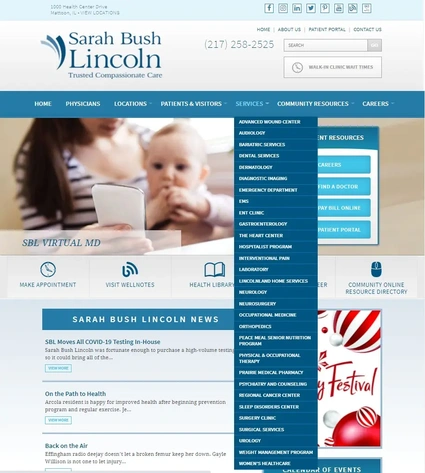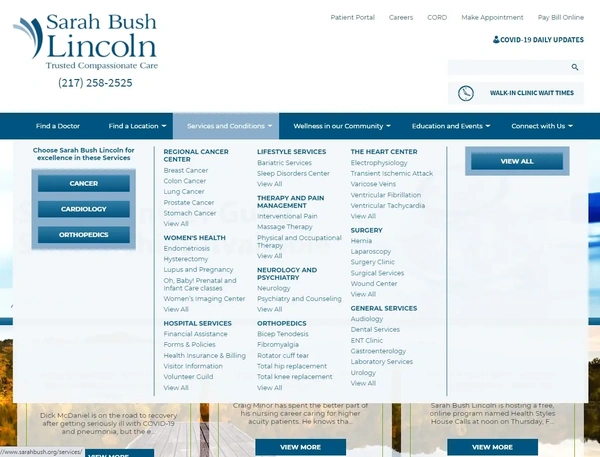Strategic Web Design in Chicago for Nonprofits: Purposeful, Scalable, and Budget-Aligned
Recently updated on
Good design isn’t about spending more—it’s about spending smart.
For mission-driven organizations, a strong website is more than a digital presence—it’s a mission amplifier. It should build trust, serve diverse communities, and guide action; however, with limited budgets, organizations often find themselves caught between DIY templates and enterprise price tags.
The truth? Affordability doesn't mean basic. It means thoughtful prioritization, right-sized solutions, and a partner who understands how to stretch every dollar without sacrificing performance, accessibility, or professionalism.
This blog explores what a strategic web design in Chicago truly means for mission-driven organizations—and how to maximize value from your budget without compromising quality, compliance, or scalability. We’ll also demonstrate how collaborating with a local, experienced team like Imaginary Landscape enables you to launch a site that accurately reflects your mission and evolves in line with your impact.
The Real Cost of "Cheap" Web Design in Chicago
The internet is full of $99 website deals and "instant site" promises. But these often come with hidden costs:
- Slow load times that damage SEO and user trust
- Mobile performance issues that alienate users
- Limited customization when needs evolve
- Security vulnerabilities and poor content ownership
- No maintenance plan or futureproofing
Worst of all? These websites often fail to drive engagement. A visually appealing homepage that fails to inspire action or demonstrate impact isn’t delivering value.
Imaginary Landscape has helped many nonprofits recover from underperforming platforms. The lesson is clear: true affordability comes from building smart, not cutting corners.
What "cost-effective" Really Means in nonprofit web design in Chicago
"Cost-effective" should never be a synonym for "limited." In the nonprofit space, it means:
- Smart scoping based on mission-critical features
- Scalable architecture that evolves with you
- Long-term value that reduces rework and tech debt
According to Clutch.co, pricing tiers for professional web development include:
| Tier | Cost Range | Best For | Key Features |
| Mid-Range | $10,000 - $50,000 |
Growing nonprofits and arcive campaigns |
Custom CMS, SEO, API integrations, brand alignment |
| Advanced | $50,000 - $300,000+ |
Large orgs, grant platforms, universities |
UX research, compliance, custom applications, and support for multiple websites |
What These Tiers Typically Include
- Mid-Range ($10,000 – $50,000):
- Custom UX/UI design with CMS integration (e.g., WordPress, Drupal)
- API integrations (like donation tools, Mailchimp, Google Analytics)
- Interactive content, SEO strategy, and brand alignment
- Ideal for: established nonprofits with ongoing campaigns and visibility needs
- Advanced ($50,000 – $300,000+):
- Fully custom web applications, membership systems, donor dashboards
- Advanced UX research, compliance standards (ADA, HIPAA)
- High-performance design with integrated analytics and scaling
- Ideal for: large nonprofits, universities, grant-funded platforms
Of course, these ranges are only part of the picture. No two nonprofits are precisely alike, and neither are their digital needs. That’s why tailor-made pricing structures are so important. You can achieve strong outcomes by shaping scope and priorities around your goals, timeline, and audience without overspending or underbuilding. Affordability is best measured not by the sticker price, but by how effectively your website delivers on your mission.
Smart Budgeting: What Nonprofit Teams Should Expect
With over 57,000 nonprofit organizations employing nearly 820,000 people, Greater Chicagoland is a vibrant hub for mission-driven work. In this landscape, your website isn’t just a tool—it’s a credibility builder.
As Katy Teson writes in Wired Impact:
“A credible nonprofit website shows people they can trust your organization—because you're transparent, professional, and serious about your work.”
Trust is built not only through thoughtful design and messaging but also through strategic planning. A strategic web design process in Chicago helps you:
- Communicate transparency and professionalism
- Align design with donor and community needs
- Prioritize features that drive conversions
Key budget drivers include:
- Site architecture – Number of pages and user flows
- Custom features – Donation tools, multilingual support, events
- Design – Accessibility, brand alignment, visual clarity
- Content – New copy, migrations, optimizations
- Technical needs – Hosting, security, maintenance, analytics
Innovative nonprofits start by defining goals, building in phases, and planning for long-term sustainability, not just launch day.
Five Practical Ways to Build Value Without Overspending
So, how do you keep costs manageable while building a site that advances your mission? Here are five guiding principles that successful nonprofits follow:
1. Start with Strategy
Jumping into design without a plan is like launching a campaign without a goal. Before a single page is built, define success: Are you driving donations, recruiting volunteers, or delivering services online?
Strategic planning sets the foundation for a leaner, more effective build. As multiple nonprofit design guides emphasize, clear goals help prevent costly backtracking.
2. Prioritize Mobile and Speed
With more than half of nonprofit website traffic from mobile devices, the user experience must be fast and responsive. Research shows that 79% of users won’t return after a poor experience.
Optimizing for speed and mobile isn’t just a best practice—it’s a trust signal.
3. Use Scalable, Flexible Platforms
Avoid platforms that lock you in with rigid templates or require developers for every content update. Look for tools and CMS frameworks that balance ease of use with long-term flexibility.
Experts recommend solutions that reduce technical debt and allow your team to evolve content as your programs grow, without ballooning costs.
4. Design for Clarity, Not Flash
Fancy animations and bold visuals may look exciting, but often distract from your mission. Instead, focus on a clear message, logical layout, and compelling calls to action.
Visitors engage more when navigation is intuitive and visual clutter is minimized, particularly on mobile devices.
5. Plan for Ongoing Support
Your website shouldn’t peak at launch. Even well-designed sites can fall apart without maintenance and updates. Include security updates, content refreshes, backups, and platform upgrades in your budget.
Neglecting this leads to broken pages, outdated plugins, and preventable security issues.

Why Working with a Local Chicago Web Partner Makes a Difference
Your nonprofit is rooted in Chicago—your web partner should be, too. A local team brings:
- Firsthand understanding of your audience and community
- Familiarity with local compliance and funding needs
- Faster feedback, real collaboration, and cultural alignment
At Imaginary Landscape, we’ve supported mission-driven organizations in Chicago and beyond for nearly 30 years. We approach every project with strategy, empathy, and a commitment to outcomes.
Local Work, Local Wins
Take Sarah Bush Lincoln Health Center, a long-time client serving central Illinois. They came to Imaginary Landscape with a common nonprofit challenge: a website that was difficult to navigate and did not align with how patients searched for services.
We responded with a strategy rooted in fundamental research, including user testing, in-depth analytics, and card-sorting exercises, to gain a deeper understanding of audience behavior. We restructured their services navigation by medical condition instead of an A–Z list, making care easier to find.
The result?
- 67% increase in appointment requests via mobile
- 59% growth in traffic to hospital services


This is what partnership looks like when your web team truly understands your mission, region, and audience.
Strategic Should Still Mean Exceptional
Your nonprofit’s mission deserves a website that works as hard as you do.
Strategic web design in Chicago isn’t about cutting back—it’s about focusing forward. It’s about building with intention, not limitation. By prioritizing strategy, scalability, and clarity, nonprofits build platforms that amplify their mission while staying sustainable and adaptable.
Let’s build something that lasts. Explore our nonprofit solutions.


 of value from this post, would you please take a sec and share it? It really does help.
of value from this post, would you please take a sec and share it? It really does help.